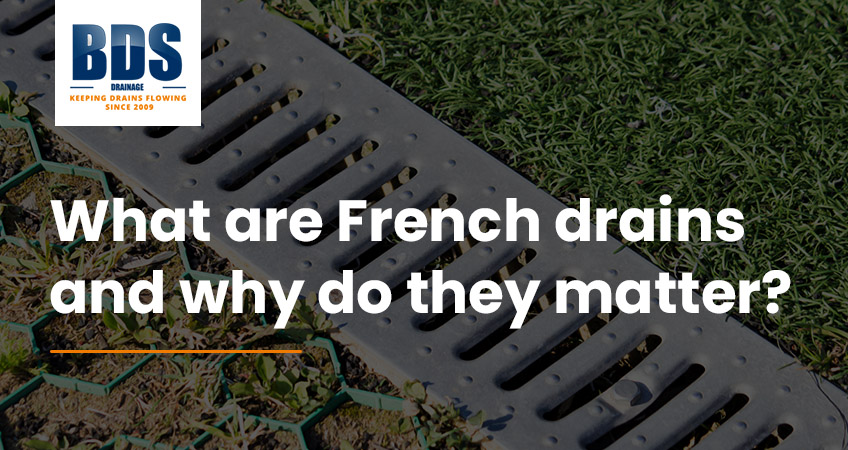Ever wondered why your garden turns into a mini lake every time it rains? Or perhaps you’ve noticed water pooling around your property’s foundation—pooling water and even dampness can be clear signs of water issues—making you nervous about potential damage? These problems are often caused by excess water accumulating where it shouldn’t. The solution might be simpler than you think—and it’s been around for centuries. French drains are one of the most effective yet underappreciated drainage solutions available, and understanding what they are could save you thousands in water damage repairs.
French drains aren’t actually French (plot twist!); the system is named after Henry French, who popularized the method. They’re incredibly effective at solving water management problems on your land or around your building’s ground. Whether you’re dealing with a soggy garden, basement flooding concerns, or surface water issues, these clever drainage systems work quietly behind the scenes to redirect water away from where you don’t want it, protecting the building and its foundation. Before choosing a solution, it’s important to first establish the cause of your water issues.
At BDS Drainage, we’ve installed countless French drains across London and the South East, and we’ve seen firsthand how transformative they can be for properties plagued by water woes. French drains are a form of land drainage designed to manage water on your property.
A brief history of French drains
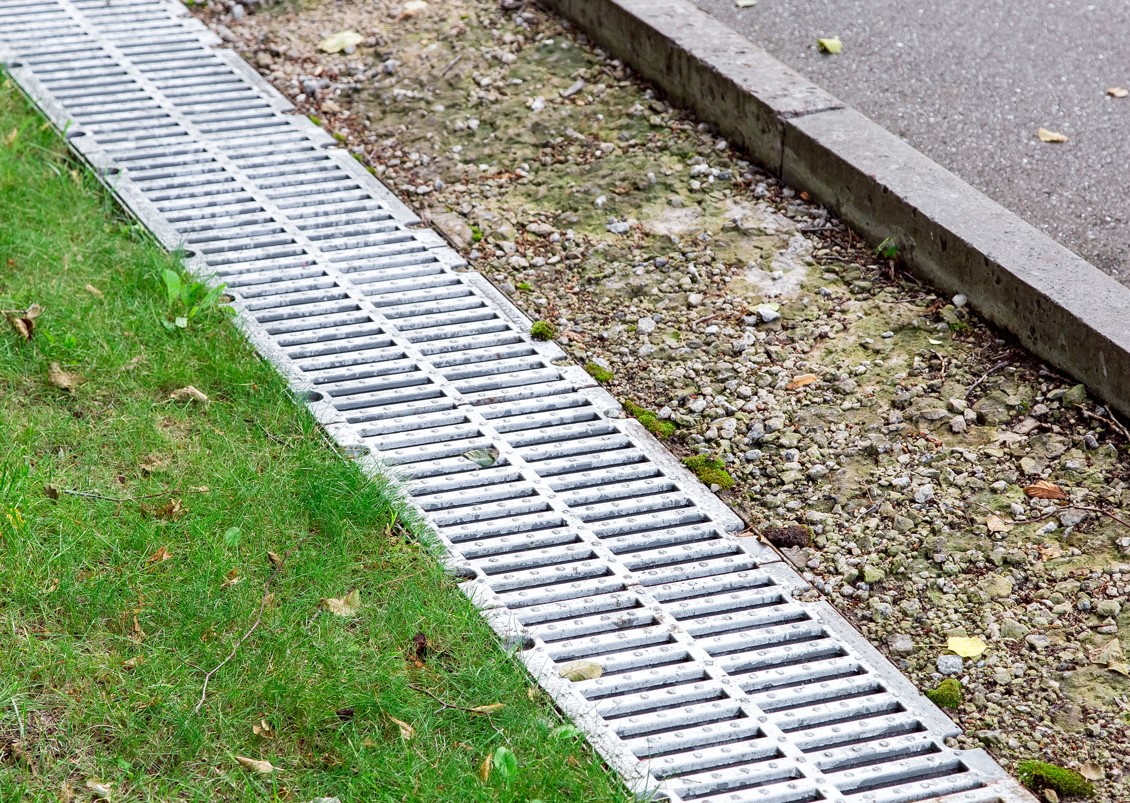
Despite their name, French drains weren’t invented in France. They’re named after Henry Flagg French, an American lawyer and farmer who popularised the technique in his 1859 book “Farm Drainage.” French wasn’t the first person to dig trenches and fill them with stones—ancient civilisations were using similar methods thousands of years ago—but he was the first to write comprehensively about the system and its benefits.
The basic principle has remained largely unchanged since French’s time: dig a trench, fill it with graded materials, and let gravity do the work. What has evolved is our understanding of materials, gradients, and installation techniques. Modern French drains use sophisticated geotextiles, carefully graded aggregates, and perforated pipes to maximise efficiency and longevity.
How French drains work
The beauty of a French drain lies in its simplicity as a form of drainage solution. At its core, it’s a gravel- or stone-filled trench that intercepts and redirects surface and subsurface water. The system relies on two fundamental principles: gravity and the path of least resistance.
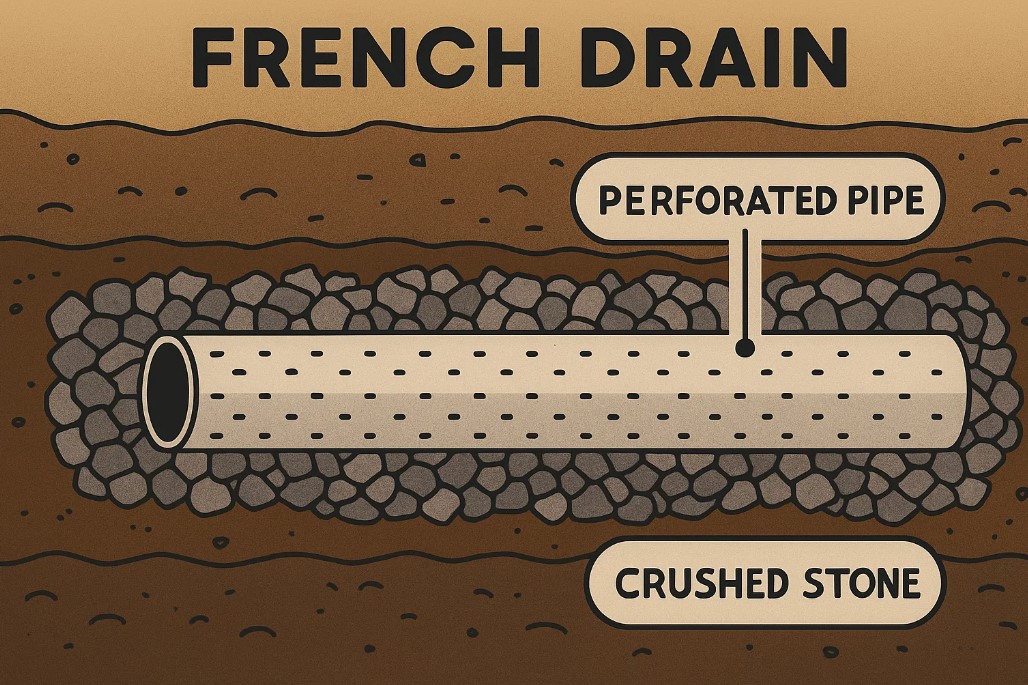

When water encounters a French drain, it flows into the gravel or stone because it’s easier to move through the loose aggregate than through compacted soil. The perforated pipe, which is laid at the lowest point of the trench, has holes typically facing down to maximize collecting water from the surrounding ground. This pipe channels the water away to a suitable discharge point—perhaps a storm drain, soakaway, or lower area of your property—ensuring the area is properly drained.
The typical French drain consists of several key components working in harmony. The trench itself, usually between 150-300mm wide and 300-600mm deep, houses a perforated drainage pipe surrounded by a layer of graded gravel or stone aggregate. The trench is lined with a geotextile filter membrane, which wraps around the gravel to prevent soil infiltration and clogging while allowing water to pass through. This geotextile filter membrane is crucial for maintaining efficient drainage and preventing debris from blocking the system. Finally, the surface is backfilled with topsoil and can be seeded or landscaped to blend seamlessly with your garden.
Benefits of installing a French drain
French drains offer numerous advantages that make them a popular choice among drainage experts and property owners alike. The most obvious benefit is efficient water management—they excel at preventing water accumulation around foundations, in basements, and across lawns or driveways.
Property protection is another significant advantage. By directing water away from your home’s foundation, French drains help prevent costly structural damage, basement flooding, and soil erosion. To ensure effective drainage, it is crucial to maintain the correct slope—typically at least a 1% gradient—so water flows properly to the discharge point. They’re particularly valuable in areas with clay soils or properties situated on slopes where surface water naturally flows towards buildings.
From an aesthetic standpoint, French drains are practically invisible once installed. Unlike surface drainage systems that can interrupt landscaping, a properly installed French drain disappears beneath your lawn or garden, maintaining your property’s visual appeal while working continuously in the background.
Common applications for French drains
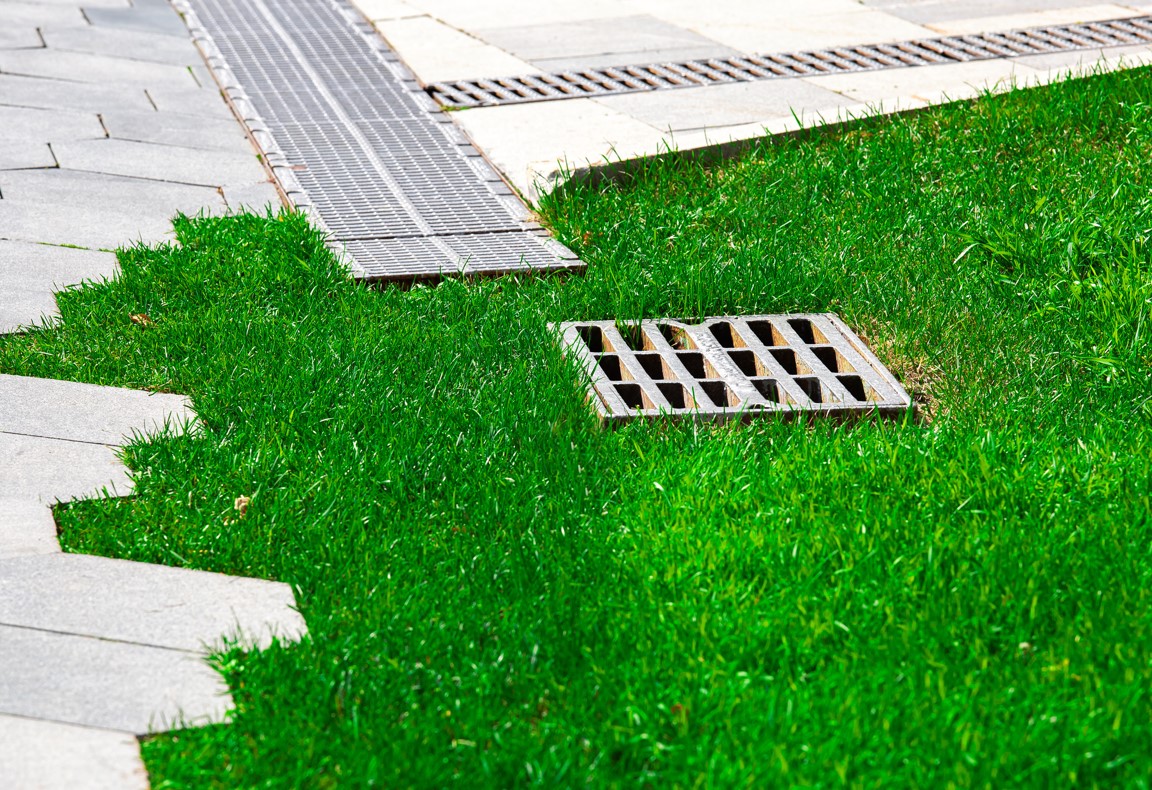

We install French drains in various scenarios across residential and commercial properties. One of the most common applications is foundation drainage, where the system intercepts groundwater before it can accumulate against basement or foundation walls. This is particularly crucial in areas with high water tables or clay soils that don’t drain naturally, as the ground conditions can lead to excess water buildup.
Garden and lawn drainage
If you’ve got areas where pooling water consistently appears after rainfall, creating muddy patches or killing grass, a French drain can transform these problem zones into usable space by collecting water from the ground and directing it away. We’ve helped countless homeowners reclaim soggy corners of their gardens using this technique.
Commercial applications
Examples include car park drainage, where French drains manage surface runoff from large paved areas, and agricultural settings where they prevent waterlogging in fields or around farm buildings. In these cases, proper land drainage is essential to protect both the land and the building structures from excess water. Sports facilities also benefit from French drain installation, ensuring playing surfaces remain usable even after heavy rainfall.
When planning installation, it’s important to position the French drain at the lowest point of the area to ensure effective drainage. Unlike a pit or other simple drainage methods, a French drain uses a gravel-filled trench with a perforated pipe to efficiently collect and redirect excess water.
The installation process explained
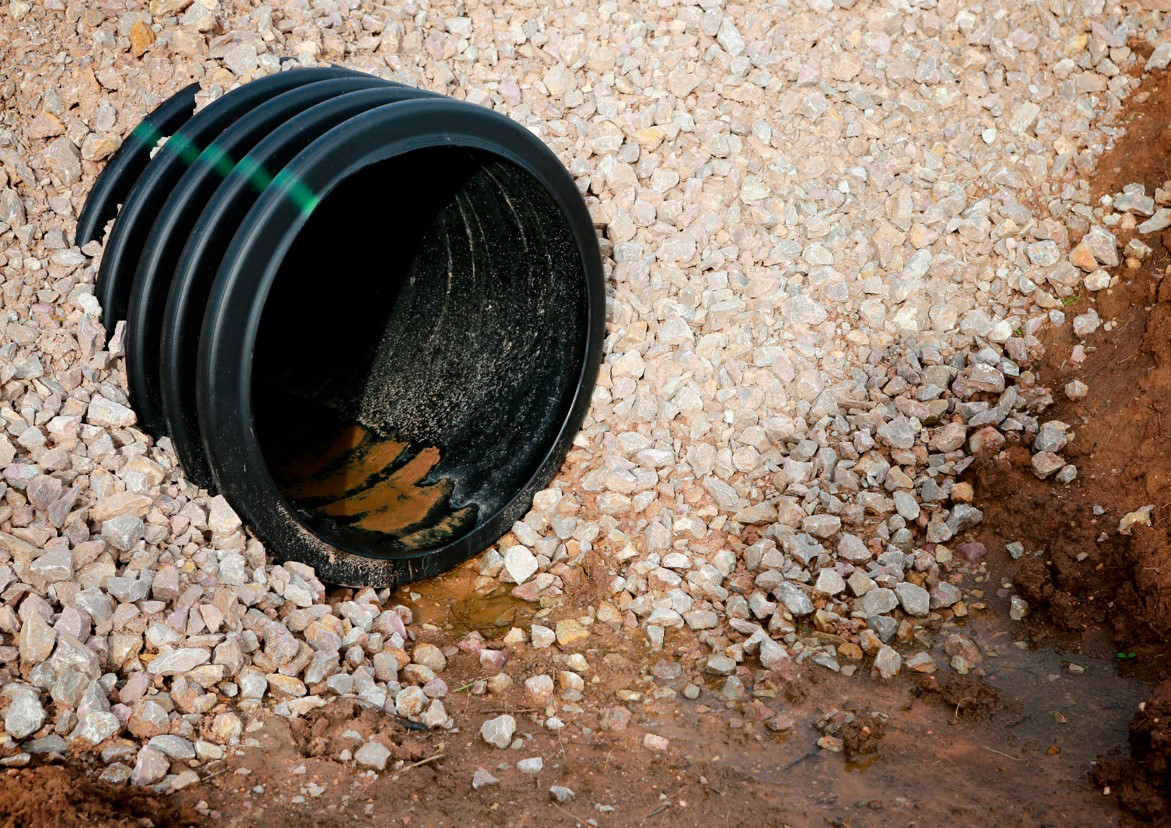

Installing a French drain is a construction task that requires careful planning and execution to ensure optimal performance. The process begins with a thorough assessment of your property’s drainage needs, including identifying water sources, determining appropriate gradients and slope, locating existing piping to avoid damage, and selecting the best discharge location.
Digging is the most labour-intensive phase, requiring precise trenching at the correct depth and slope—typically a minimum fall of 1:100 to ensure adequate water flow. The trench must be carefully shaped to accommodate the pipe and surrounding aggregate while maintaining structural integrity.
Material selection is crucial for long-term success. We use high-quality perforated pipes, which are laid at the bottom of the trench, a layer of graded aggregate that won’t clog over time, and durable geotextile fabrics for lining the trench to prevent soil migration. The installation sequence—pipe placement, aggregate backfill, fabric wrapping, and surface restoration—must be executed correctly to ensure the system functions as designed.
Maintenance requirements for French drains
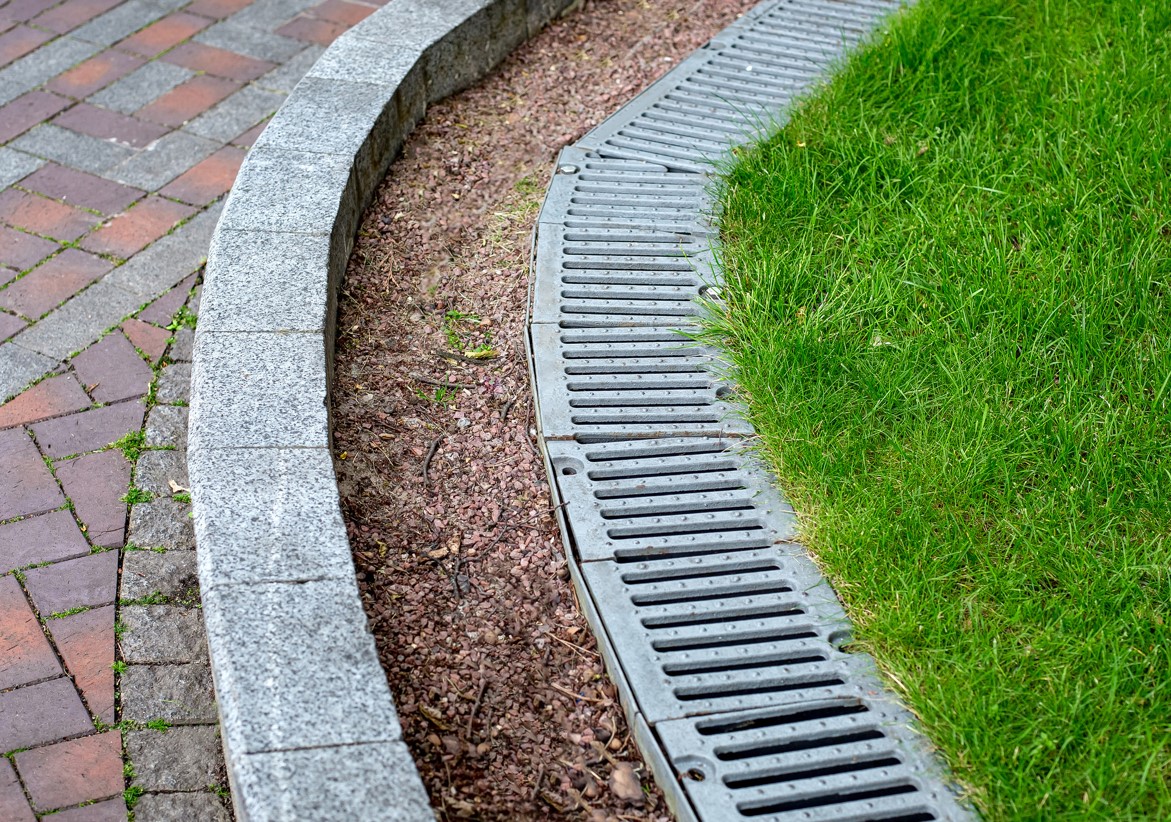

One of the appeals of French drains is their relatively low maintenance requirements. However, like any drainage system, they benefit from periodic inspection and care to maintain optimal draining performance and to prevent clogging.
Annual visual inspections of surface areas can help identify potential issues before they become major problems. Look for signs of settlement, surface water pooling where it shouldn’t, or unusually wet areas that might indicate system blockage, clogging, or failure.
Every few years, it’s worth having a professional assessment to ensure the system continues functioning correctly. At BDS Drainage, we can perform CCTV drain surveys of the pipe network to identify any blockages, clogging, root intrusion, or structural issues that might compromise draining performance.
Preventive measures include keeping the discharge area clear of debris, avoiding driving heavy vehicles over the drain route, and being mindful of what you plant nearby—some trees and shrubs have aggressive root systems that can infiltrate and block drainage pipes.
DIY installation versus professional expertise
While French drain installation might appear straightforward, successful implementation requires expertise that goes beyond basic DIY skills. Before attempting installation, it is important to seek expert advice to ensure proper planning and avoid costly mistakes. Incorrect gradient calculation, poor material selection, or inadequate excavation can result in a system that fails to function properly or, worse, exacerbates existing drainage problems.
Professional installation by drainage experts like our team at BDS Drainage ensures your French drain is designed and built to last. We understand local soil conditions, regulatory requirements, and the nuances of effective water management. Our experience means we can anticipate potential problems and design solutions that work reliably for decades.
The cost difference between DIY and professional installation often evaporates when you factor in the tools, materials, and time required, not to mention the risk of having to rebuild a failed system.
As a company committed to high standards and customer satisfaction, BDS Drainage offers a comprehensive French drain installation service. We can assist with every step of the process, from planning to installation, and provide a full range of services for both residential and commercial drainage solutions. Professional installation also comes with guarantees and ongoing support that DIY projects simply can’t match.
Common issues and their solutions
Even well-installed French drains can experience problems over time. Blockages are perhaps the most common issue, typically caused by sediment accumulation, root intrusion, or improper material selection during installation. Regular maintenance and professional cleaning, including high pressure water jetting, can fix most blockage problems efficiently.
Root intrusion becomes more likely as trees and shrubs mature near the drainage system. Strategic plant selection during landscaping and root barriers during installation can prevent this issue. When roots do infiltrate the system, professional clearing and pipe repair may be necessary to fix leaks, often with minimal disruption to your property.
Settlement can occur if the trench wasn’t properly compacted during installation or if inappropriate materials were used. This might manifest as surface depressions or reduced drainage efficiency. Professional assessment can determine whether repair or replacement is the most cost-effective fix, ensuring minimal disruption.
Environmental benefits of French drains


French drains offer significant environmental advantages that extend beyond simple water management. By controlling surface runoff, they reduce soil erosion and prevent sediment from entering waterways—a major benefit for local ecosystem health.
These systems also help manage stormwater naturally, reducing the burden on municipal drainage infrastructure during heavy rainfall events. This is particularly valuable in urban areas where impermeable surfaces create significant runoff volumes that can overwhelm traditional drainage systems.
French drains can be integrated with sustainable drainage systems (SuDS) to create comprehensive water management solutions that benefit both individual properties and the broader environment. They represent a low-energy, passive approach to drainage that works with natural processes rather than against them.
Comparing French drains with alternative solutions
Surface drainage systems
Channel drains and gullies, are one form of drainage solution and offer different advantages and limitations compared to French drains. Other forms include filter drains, rock drains, and weeping tiles, each designed to remove surface or subsurface water in specific situations. While surface systems handle large volumes of water quickly, they’re more intrusive visually and can be damaged by vehicles or maintenance equipment.
Soakaways
Soakaways are particularly effective in areas with permeable soils. However, they require more space and aren’t suitable for all soil types. French drains, along with filter drains, rock drains, and weeping tiles, can often work where soakaways fail, making these forms more versatile for challenging drainage situations.
Traditional surface water management systems
Improved guttering or surface grading, might solve minor drainage issues but often proves inadequate for significant water management challenges. French drains and other forms like filter drains, rock drains, and weeping tiles provide more comprehensive, long-term solutions for properties with persistent drainage problems.
Recent innovations in French drain technology
Modern French drain installation benefits from several technological advances that improve system longevity and performance. Advanced geotextile materials offer better filtration characteristics while maintaining long-term durability, even in challenging soil conditions.
Improved pipe materials, including high-density polyethylene options with enhanced perforation patterns, provide better water collection and flow characteristics. Some systems now incorporate inspection chambers and cleanout access points that simplify future maintenance.
Design software allows drainage engineers to model water flow patterns and optimise system layouts before installation begins. This technological approach reduces guesswork and ensures systems are properly sized for their intended applications.
Understanding the investment required
French drain installation costs vary significantly based on factors including system length, excavation difficulty, site access, and material specifications. Generally, professional installation represents excellent value when compared to the potential costs of water damage or property remediation.
Material costs typically include perforated pipe, graded aggregate, geotextile fabric, and surface restoration materials. Labour costs reflect the skill and time required for proper excavation, installation, and finishing work.
When evaluating costs, consider the long-term benefits: reduced risk of structural damage, improved property usability, and increased property values. Many property owners find that French drain installation pays for itself through prevented damage and enhanced property enjoyment.
To get started, you can easily request a quote or consultation for your drainage needs using our contact form.
Frequently asked questions about French drains
How deep should a French drain be?
French drain depth varies based on application, but typically ranges from 300-600mm deep. Foundation drainage systems might require greater depths to intercept groundwater effectively.
Can French drains freeze in winter?
Properly installed French drains rarely freeze because they’re below the frost line and moving water is less likely to freeze than standing water. However, discharge points should be designed to prevent ice blockages.
How long do French drains last?
Well-installed French drains using quality materials can function effectively for 50+ years with minimal maintenance. The key is proper initial installation and periodic professional assessment.
How far from a building should a French drain be installed?
In most cases, a French drain should be positioned at least a meter away from older buildings to prevent potential structural issues.
Are there regional considerations for French drain installation?
Yes, in the UK, installation standards may vary depending on local soil conditions and building regulations.
Can French drains be installed under driveways?
Yes, French drains can be installed under driveways, though this requires more robust pipe materials and careful backfilling to support vehicle loads without compromising drainage function.
Do French drains work in clay soil?
French drains can work in clay soil, though they may require modifications such as increased aggregate depth or connection to alternative discharge methods since clay doesn’t absorb water readily.
Will a French drain solve my basement flooding problem?
French drains can be highly effective for basement water management when properly designed and installed. However, severe flooding issues might require additional waterproofing measures alongside drainage improvements.
Should I hire a professional to install a French drain?
Hiring an established company in the drainage industry ensures the system is designed and installed correctly, maximizing effectiveness and longevity.
Are there regulations for French drain installation?
Yes, you may need to coordinate with local authorities to ensure compliance with relevant regulations, especially when connecting to public sewers or working near property boundaries.
Transform your property with professional drainage solutions
French drains represent one of the most effective, long-lasting solutions for property drainage challenges. Whether you’re dealing with foundation water issues, garden flooding, or surface water management problems, these systems offer reliable, low-maintenance performance that protects your investment and enhances your property’s usability.
At BDS Drainage, we’ve helped hundreds of property owners across London and the South East solve their drainage problems with expertly designed and installed French drain systems. Our team combines decades of experience with the latest materials and techniques to deliver solutions that work reliably for years to come.
Don’t let water damage threaten your property or limit your enjoyment of outdoor spaces. Contact our drainage experts today for a free consultation and quote. We’ll assess your specific situation, explain your options, and design a French drain system that meets your needs and budget.
Call us to schedule your free assessment—your property deserves professional drainage solutions that work.

